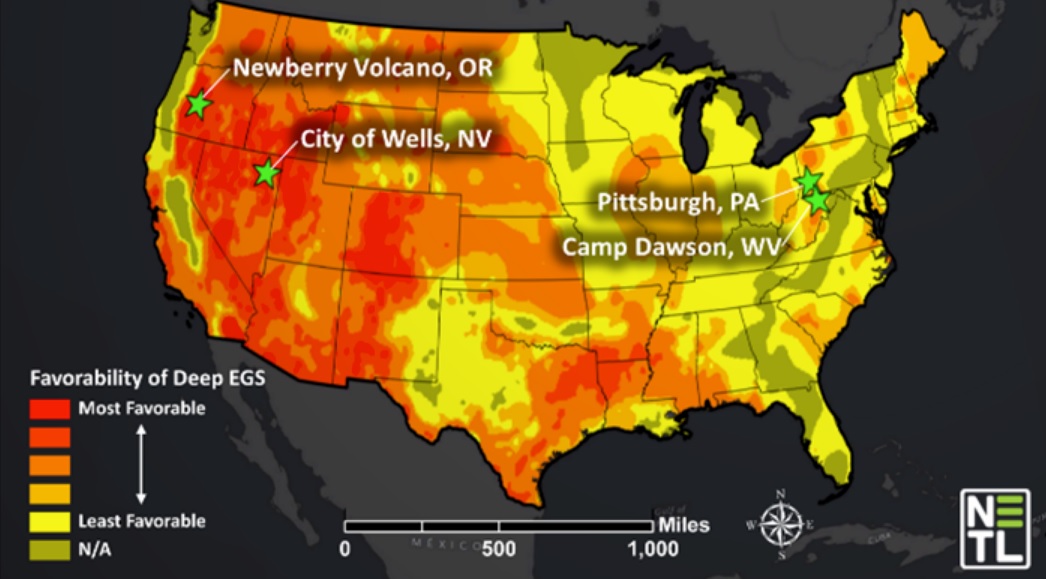Every few years a new study comes out about geothermal power in the U.S., which means that every few years I can talk about how the Conway region is one of the most likely places for geothermal power in the Northeast.
I mean real geothermal, which uses high underground temperatures to boil water that spins turbines and generates electricity. This contrasts with household “geothermal,” which is a heat-exchange system using stable underground temperatures to increase the efficiency of traditional heating and cooling systems.
True geothermal is prominent in parts of the world where magma comes relatively close to the surface, raising temperatures within reach of drilling rigs. That includes the American West, the Philippines and Iceland, which is the only place in the world where humans have caused a volcano, after a drill punctured a pocket of underground lava in 2007.
The East Coast, which is geologically quiet, has always been a geothermal dud. So it was a big surprise back in 2007 when an MIT report identified the Conway area as the one spot east of the Mississippi where true geothermal might be financially feasible – not due to underground magma, but to natural radiation from New Hampshire’s signature stone.
Turns out, all the granite and related elements produces enough radioactivity deep underground to be potentially feasible. In fact, during the 1970s’ oil shocks, a “hot, dry rock” experiment was planned for Conway to determine the suitability of geothermal power. But oil prices went down again so the study was canceled.
I mention all this again because last week, the Department of Energy released a report about subsurface modeling, searing for good places for geothermal energy. They identified a couple places out west and, surprisingly, Pittsburg, Pa., and a location in West Virginia. Read more about it here.
They didn’t mention Conway, but you can see it on the map shown above, because it’s redder, as in more likely to produce geothermal energy.
I wouldn’t get too excited, though. In in 2007, the MIT folks said if Conway tapped its geothermal energy, it would be the most expensive such site in the country because of the extreme depth needed to drill to get enough heat. Still, as a theoretical maximum, it claimed that New Hampshire geothermal could generate as much as three Seabrook Stations worth of electricity – or, if you prefer, three Northern Pass – which would certainly shake things up.


 Return to the Concord Monitor
Return to the Concord Monitor
New technology for fast/cheap drilling might make this feasible — https://www.hypersciences.com/hyperdrill/
Claims fast efficient drilling – can drill > 7km in less than a week. New technology.
https://vimeo.com/215699909
Time for a new article and push on this tech. 3x Seabrook power from geo would be great. Cheap electric for NH.
Hi–Tom Eastman of the Conway Daily Sun here–I have heard they did do some studies in the late ’70s or early ’80s. Can you confirm or direct me to the right place to call? Thank you.
That was done in Redstone. A UNH geology professor was involved. Harry Mason watched over the site and made boxes that the cores were stored in.
I wrote about that too: https://granitegeek.concordmonitor.com/2022/06/16/n-h-deep-drilling-rock-cores-still-need-a-forever-home/